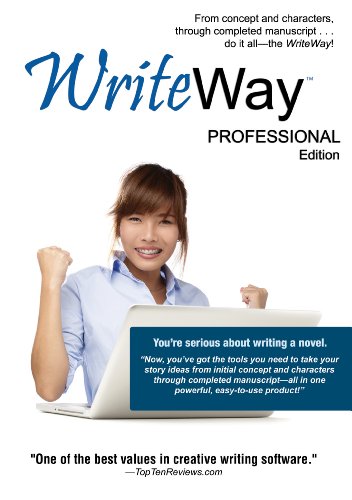

- #Difference between writeitnow and writeway pro software#
- #Difference between writeitnow and writeway pro Pc#
- #Difference between writeitnow and writeway pro windows#
The killer for me was that Ulysses is plain text, though: no formatting whatsoever. The interface for me came to represent what I was beginning to love about OS X: simplicity and cool. When I came across Ulysses, I thought I'd found it.

When I first bought my old iBook, I scoured the net for OS X writing applications, hoping to find the killer app that had eluded me on the PC.
#Difference between writeitnow and writeway pro software#
What would be the point? It's not like I'm ever going to make much money out of Scrivener my only motivation for creating it is that I want software that suits me (more on that later). Had Ulysses or any of the other writing software programs out there suited the way I write, you can be sure that I would never have created Scrivener. The thing about programs aimed at writers is that no one program is going to suit all writers, because all writers work in different ways. Oh, and you know what? You never hear anybody complain that Nisus Writer or Mellel are rip-offs of Microsoft Word.īut anyway. All of them have some form of list of contents next to a text view for editing a chapter or scene, and they all allow you to keep separate notes for each chunk of text. There is WriteWay Pro, WriteItNow!, NewNovelist, Liquid Story Binder and, by far the best in my opinion, RoughDraft, to name but a few.
#Difference between writeitnow and writeway pro Pc#
But I came to the Mac two years ago after being a long-time PC user, and the PC has been rife for some time with applications trying to do what Ulysses does so well: provide an organisational tool for writers. So in all fairness, if you are a long-time Mac user, you could be forgiven for thinking that Ulysses is the only software of its kind aimed specifically at writers. It was around long before Ulysses, but it was nowhere near as sophisticated or beautiful. It had a list of documents on the left, and you clicked on one to select it and edit it in the text view on the right. If you've been on a Mac for a while, you might remember a program called Z-Write. Let me get this straight: Ulysses is a wonderful application, but it is an original implementation and not an original idea. There are others still, like Power Writer and RoughDraft, that appear to be no longer under development.Īnd then of course there is also a whole basketful of fiction outliners such as Power Structure, Dramatica, StoryView, Stor圜raft and Save the Cat!, most aimed mainly at the wannabe-screenwriter market, that will offer to structure your story for you according to any theory, or none.You know what gets my goat? When people accuse Scrivener - which hasn't even reached version 1.0 yet - of being a rip-off of Ulysses. There are others, such as New Novelist and WriteWay Pro, which fall more into the prescriptive category.

Of these five, I favour PageFour, which is a simple but steady piece of software with possibly similar potential to Scrivener, and yWriter, which has the merit that it is free. There are at least five of these that are being actively developed for Windows. These are the ones that in general I prefer, because they don’t confine me and their tools are the tools I use on a daily basis. More recent programmes tend not to bother with these approaches but, like Scrivener, focus instead on providing basic practical drafting tools such as a full-page view, a binder that is often combined with an outliner, a scratchpad or notepad, and various kinds of metadata (for synopses, tracking and editing). Probably such software programmes were, and continue to be, attractive to newcomers. They sometimes offer metrics for plot tension/emotional intensity. At the least they provide templates for character, location, plot and scene or “beat” attributes and point-of-view. I think the prescriptive programmes were amongst the first to be developed they often deploy story development tools to channel the user into writing according to particular theories, formulae or models: Hollywood’s three Acts/120 pages, or the Joseph Campbell/Star Wars mythic formula for example. In both cases their output is plain text, or at the maximum RTF. The remaining programmes tend to split between those that are “prescriptive” in one way or another, and those that allow the user more freedom. Nothing on either platform competes with Word’s “track-changes”, “compare-documents” and annotation tools. I’ll also leave aside MS Word, which I think is still better than any competitor for short-form writing and for polishing any kind of writing. I’ll leave aside IdeaMason, which is primarily a non-fiction tool and has been discussed previously here.
#Difference between writeitnow and writeway pro windows#
There’s nothing on the Windows platform that rivals Scrivener as a fiction drafting tool, in my view. >for rapid thought-recording (as have several Mac >Scrivener, whose praises I’m always ready to sing, has a


 0 kommentar(er)
0 kommentar(er)
